If you’re eager to start your own garden but lack the outdoor space, don’t worry! You can still cultivate your very own cherry tomato plants, even if you don’t have a patch of land to call your own. In fact, container gardening is a fantastic option for growing these delightful little fruits, and it’s easier than you might think. Not only will you be able to enjoy the taste of fresh, homegrown cherry tomatoes, but you’ll also have the added bonus of a beautiful plant right outside your door.
So let’s dive into the world of container gardening and learn all the tips and tricks for successfully growing cherry tomato plants. From the best varieties to the ideal growing conditions, pruning techniques, and even harvesting tips, we’ll guide you every step of the way. Get ready to impress your friends and family with a thriving cherry tomato plant that produces an abundance of delicious tomatoes!
Key Takeaways:
- Container gardening is a great option for growing cherry tomato plants, especially if you have limited outdoor space.
- By following the right techniques and providing the optimal growing conditions, you can successfully grow your own cherry tomato plant in a container.
- Choosing the best varieties, such as ‘Black Cherry’, ‘Yellow Pear’, and ‘Sweet Treats’, can ensure a flavorful harvest.
- Regular pruning and providing support for the plant are essential for optimal growth and fruit production.
- Harvesting cherry tomatoes when they are ripe and using them in various dishes will allow you to fully enjoy the fruits of your labor.
Best Varieties of Cherry Tomatoes
When it comes to cherry tomatoes, there are several exceptional varieties that stand out for their flavor, color, and productivity. Here are some of the best varieties to consider for your garden:
- Black Cherry: This variety produces deep red tomatoes with a sweet yet tangy flavor. The fruits sometimes exhibit a stunning yellow or orange hue, adding visual interest to your garden and culinary creations.
- Yellow Pear: As its name suggests, Yellow Pear tomatoes are small, pear-shaped fruits with a vibrant yellow color. Known for their mild and slightly tangy flavor, these tomatoes are perfect for snacking or adding a pop of color to salads.
- Sweet Treats: If you prefer a deep pink tomato with incredibly sweet and juicy flesh, Sweet Treats is an ideal choice. This indeterminate variety offers high yields and is perfect for enjoying fresh, adding to sandwiches, or roasting.
The Black Cherry, Yellow Pear, and Sweet Treats varieties are cherished by home gardeners and chefs alike for their exceptional taste and versatility in the kitchen. However, it’s important to keep in mind that cherry tomato plants can be susceptible to various diseases and pests that can hinder their growth and productivity.
“Cherry tomato plants, like any other type of tomato, can fall victim to diseases such as fruit worms, aphids, hornworms, and stinkbugs. Preventing and treating these issues requires good garden care, including regular watering, maintaining healthy soil, and using organic insecticidal soap when necessary.” – Gardening Tips Magazine
Comparison of Cherry Tomato Varieties
| Variety | Color | Taste | Yield |
|---|---|---|---|
| Black Cherry | Deep Red (with occasional yellow or orange) | Sweet and tangy | High |
| Yellow Pear | Yellow | Mild and slightly tangy | Moderate |
| Sweet Treats | Deep Pink | Exceptionally sweet and juicy | High |
Understanding the unique characteristics of each variety will help you choose the best cherry tomatoes to suit your taste preferences and garden conditions. Whether you grow the vibrant Black Cherry, the sunny Yellow Pear, or the luscious Sweet Treats, you will be delighted by the flavors and versatility these tomatoes bring to your culinary adventures. In the next section, I will share valuable insights on planting and growing conditions for cherry tomato plants, ensuring their success in your garden.
Planting and Growing Conditions for Cherry Tomato Plants
When it comes to growing cherry tomatoes, providing the right planting and growing conditions is key to ensuring a successful harvest. Whether you’re a seasoned gardener or a beginner with a green thumb, these care tips for cherry tomato plants will help you cultivate vibrant, organic cherry tomatoes in containers or your garden.
Choosing the Perfect Spot
Cherry tomato plants thrive in sunny locations, so it’s important to choose a spot that receives at least six to eight hours of full sun exposure each day. This will allow the plants to photosynthesize and develop strong, healthy foliage and abundant fruit. Additionally, ensure that the soil in the chosen area is slightly acidic, loose, and well-drained. This will promote optimal root growth and nutrient absorption.
Consistent Watering
Watering your cherry tomato plants consistently is crucial for their growth and productivity. Aim to keep the soil moist but not soggy, as excessive water can lead to root rot and other issues. It’s generally recommended to water the plants deeply, providing about one to two inches of water per week. This allows for healthy root development and prevents wilting or nutrient deficiencies.
Growing Organically
“Organic cherry tomato plants are not only better for your health, but also for the environment. By avoiding synthetic chemicals and fertilizers, you can enjoy tasty, chemical-free tomatoes while reducing your carbon footprint.”
For those who prefer organic gardening, growing organic cherry tomato plants is a great option. You can achieve this by using organic fertilizers, compost, and natural pest control methods. Organic fertilizers, such as compost or well-rotted manure, provide the necessary nutrients without the use of harmful chemicals. Implementing integrated pest management techniques, such as companion planting and beneficial insect attractors, can help keep pests at bay without resorting to chemical insecticides.
Container Gardening for Cherry Tomato Plants
“Container gardening offers flexibility and convenience, allowing you to grow cherry tomatoes in limited spaces and even indoors. It’s a fantastic solution for those who lack garden beds or have small balconies.”
If you’re short on garden space or live in an urban environment, container gardening is an excellent choice for growing cherry tomato plants. To succeed in container gardening, choose a large container that provides sufficient room for the roots to spread. Use a well-draining potting mix that retains moisture without becoming waterlogged. Regular watering, fertilizing, and adequate sunlight are essential for container-grown cherry tomato plants to flourish and produce an abundance of tasty tomatoes.
Ideal Growing Conditions for Cherry Tomato Plants
| Conditions | Requirements |
|---|---|
| Sunlight | 6-8 hours of full sun exposure daily |
| Soil | Slightly acidic, loose, and well-drained |
| Watering | Consistently moist soil, without overwatering |
| Organic Growth | Use organic fertilizers and natural pest control methods |
| Container Gardening | Choose a spacious container with well-draining potting mix |
By following these care tips for cherry tomato plants, including providing optimal sunlight, moisture, and nutrients, you can enjoy a bountiful harvest of delicious and organic cherry tomatoes. Whether you grow them in your garden or in containers, these vibrant and flavorful tomatoes will be a delightful addition to your meals and snacks.
Pruning and Supporting Cherry Tomato Plants
Pruning cherry tomato plants is an essential practice that can greatly enhance the fruit production and overall health of the plants. By removing suckers or small stems that grow from the main stem, I can help redirect the plant’s energy towards the fruit-bearing stems. This promotes larger and more flavorful tomatoes.
It’s also crucial to prune off any stems that drag on the ground. These low-hanging branches are more susceptible to diseases and pests. Pruning them off not only prevents potential problems but also improves air circulation around the plant, reducing the risk of fungal infections.
Supporting cherry tomato plants is equally important to ensure their vertical growth and prevent damage to the roots and vines. There are several methods for providing support, including staking, caging, or using trellis systems.
Staking involves driving a sturdy stake into the ground near the main stem and carefully tying the plant to the stake as it grows. This method provides stability and helps the plant grow upwards, maximizing space efficiency.
Caging utilizes wire or metal cages with a wide diameter that can accommodate the sprawling habit of cherry tomato plants. The cages are placed around the plants, offering support as they grow and preventing the vines from collapsing under the weight of the fruits.
Trellis systems, on the other hand, are perfect for vertical gardening. Using a trellis or a mesh net, I can guide the tomato vines to grow upwards along the support structure. This not only saves space but also facilitates better air circulation and sunlight exposure.
Here is an example of how a trellis support system can be set up for cherry tomato plants:
| Materials | Instructions |
|---|---|
| 1. 4 wooden stakes | Place the stakes in a square formation around the cherry tomato plant, ensuring they are firmly pushed into the ground. |
| 2. Trellis netting or mesh | Attach the trellis netting or mesh to the stakes, creating a vertical support system for the tomato vines to climb. |
| 3. Secure the vines | As the cherry tomato plant grows, gently guide the vines towards the trellis netting and secure them using plant ties. |
This trellis system not only provides support but also allows for better air circulation and sunlight exposure, resulting in healthier plants and tastier tomatoes.
Remember, the right pruning and support techniques are crucial for the success of cherry tomato plants. By carefully maintaining and training their growth, I can optimize fruit production and create a thriving tomato garden.
Growing Cherry Tomatoes from Seed or Cuttings
When it comes to growing cherry tomatoes, you have two options: starting from seed or propagating from cuttings. Both methods have their advantages and can result in healthy, thriving plants that yield a plentiful harvest of delicious tomatoes.
Growing Cherry Tomatoes from Seed
One common method of growing cherry tomatoes is starting from seed. Begin by sowing the seeds indoors four to six weeks before the last frost date in your area. Fill seed trays or small pots with a quality seed-starting mix and plant the seeds according to the package instructions.
Place the seed trays in a warm location that receives plenty of sunlight or use artificial lights to provide the necessary light for germination. Keep the soil consistently moist, but avoid overwatering, as it can lead to fungal diseases.
After the seedlings have developed two to three sets of true leaves and are at least six inches tall, they are ready to be transplanted outdoors. Choose a location with full sun exposure and well-drained soil. Space the seedlings according to the recommended spacing for your chosen variety.
Water the transplanted seedlings regularly, providing about one to two inches of water per week. Mulch around the plants to help retain moisture and suppress weeds. As the plants grow, consider providing support such as stakes or cages to keep them upright and minimize damage from wind.
Propagating Cherry Tomato Plants from Cuttings
Another method of growing cherry tomatoes is by propagating from cuttings. This technique allows you to clone a healthy parent plant and produce exact replicas.
To propagate cherry tomatoes from cuttings, select a healthy, disease-free plant with strong stems. Using clean scissors or pruners, take a 4- to 6-inch cutting from a side shoot of the plant. Remove the lower leaves, leaving only one or two sets at the top.
Place the cutting in a glass of water or a moistened soilless potting mix. Ensure that the bottom nodes of the cutting are submerged in water or soil. Place the container in a warm location with indirect sunlight and maintain the moisture level as the cutting develops roots.
Once the roots have developed, usually within two to three weeks, the cuttings can be transplanted to their final growing location. This can be outdoors in a garden bed or container, or indoors as a houseplant.
Whether you choose to grow cherry tomatoes from seed or cuttings, providing them with sufficient sunlight, regular watering, and nutritious soil will help them thrive. With patience and care, you’ll be rewarded with a bountiful harvest of fresh, flavorful cherry tomatoes.
Harvesting and Using Cherry Tomatoes
Harvesting cherry tomatoes is an exciting moment for any gardener. It signifies the culmination of your hard work and the beginning of delicious culinary possibilities. When the cherry tomatoes turn from green to vibrant hues of red, orange, yellow, or purple, it’s time to pick them!
Simply give the tomatoes a gentle tug, and if they detach easily from the stem, they are ripe and ready to be harvested. It’s essential to harvest cherry tomatoes every other day to prevent overripe fruits that may split or rot. Regular harvesting will also encourage the plant to continue producing more fruits.
Cherry tomatoes are highly versatile and can be used in a variety of dishes. Their sweet and tangy flavor adds a burst of freshness to salads, salsas, and sauces. Incorporating cherry tomatoes into your recipes can elevate the taste and presentation, making every meal a culinary masterpiece.
If you have an abundance of cherry tomatoes, you can preserve them for future use. One popular method is canning, where the tomatoes are packed in jars with preserving liquid and can be stored for an extended period. Alternatively, you can freeze cherry tomatoes to enjoy their flavor year-round. Freezing is a convenient way to retain the tomatoes’ freshness and texture.
Unleash your culinary creativity with these delightful cherry tomatoes and savor the vibrant flavors they bring to your dishes.
Tasty Recipes Using Cherry Tomatoes
To inspire your culinary adventures, here are some mouth-watering recipes that highlight the deliciousness of cherry tomatoes:
- Caprese Skewers: Thread cherry tomatoes, fresh mozzarella balls, and basil leaves onto skewers. Drizzle with balsamic glaze for a simple yet elegant appetizer.
- Pasta Primavera: Toss al dente pasta with sautéed cherry tomatoes, garlic, bell peppers, zucchini, and a sprinkle of Parmesan cheese for a colorful and flavorful dish.
- Roasted Tomato Salsa: Roast cherry tomatoes with jalapeños, onions, and garlic until charred. Blend with lime juice, cilantro, and salt to create a zesty salsa perfect for dipping chips or topping tacos.
These recipes are just the tip of the iceberg when it comes to utilizing the versatility of cherry tomatoes. Let your taste buds guide you in creating delectable dishes that showcase the vibrant flavors and colors of these petite delights.
Common Problems and Diseases of Cherry Tomato Plants
Cherry tomato plants can be susceptible to various diseases and pests. It’s important to be aware of common problems that can affect the health and productivity of your cherry tomato plants. By identifying and addressing these issues early on, you can ensure the success of your tomato garden.
Pests:
Cherry tomato plants can fall victim to a range of pests, including fruit worms, aphids, hornworms, and stinkbugs. These pests can cause damage to the leaves, stems, and fruits of the plants. To control these pests, you can opt for using insecticidal soap or manually remove them from the plants by handpicking. Regular monitoring and inspection of your plants can help you catch and address pest infestations promptly.
Diseases:
Cherry tomato plants are also susceptible to various diseases caused by fungal pathogens. Some common diseases that can affect cherry tomato plants include blight, leaf spots, and bacterial spots. These diseases can cause wilting, discoloration, and deterioration of the plants’ overall health. To prevent these diseases, it is crucial to maintain healthy soil and use sterilized garden equipment. Additionally, regular inspection of your plants can help you spot any signs of disease early on, allowing for prompt treatment.
Preventing Disease in Cherry Tomato Plants
Proper garden care and maintenance can go a long way in preventing diseases in cherry tomato plants. Here are some essential tips:
- Ensure your plants have adequate spacing to promote proper air circulation.
- Water your plants at ground level, avoiding wetting the leaves and foliage.
- Apply a layer of mulch around the base of the plants to prevent soil splashing onto the leaves.
- Use organic fungicides or biopesticides to control fungal diseases.
- Practice crop rotation to prevent the build-up of disease-causing pathogens in the soil.
By following these preventive measures, you can minimize the risk of diseases and maintain the health and productivity of your cherry tomato plants.
Regular inspection and monitoring of your plants is crucial in identifying and addressing any potential problems early on. By taking proactive steps and providing proper care, you can enjoy a bountiful harvest of delicious cherry tomatoes.
Tips for Growing Cherry Tomatoes in Different Climates
Cherry tomatoes are versatile plants that can be successfully grown in various climates, whether indoors or outdoors. Here are some tips to help you grow cherry tomatoes in different environments:
Growing Indoor Cherry Tomato Plants
If you want to grow cherry tomatoes indoors, there are a few key considerations. First, ensure that your indoor plants receive sufficient sunlight. Place them near a south-facing window or use artificial grow lights to provide the necessary light intensity. Regularly rotate the plants to ensure even light exposure.
Indoor cherry tomato plants also require regular watering. Check the moisture level of the soil daily and water when the top inch feels dry. Be careful not to overwater, as this can lead to root rot.
Choose a well-draining potting mix specifically formulated for container gardening. This will help prevent waterlogged soil and promote healthy root growth. Ensure that the containers have drainage holes to allow excess water to escape.
Prune your indoor cherry tomato plants regularly to control their size and shape. Remove any suckers or side shoots that emerge between the main stem and branches. This will promote better airflow and prevent overcrowding.
Container Gardening for Cherry Tomato Plants
Container gardening offers a practical solution for growing cherry tomatoes in outdoor spaces with limited growing areas, such as balconies or patios. It allows you to control the soil quality, drainage, and mobility of the plants.
Choose a large container with good drainage to accommodate the root system of cherry tomato plants. A container with a diameter of at least 12 inches is recommended. Fill the container with a well-draining potting mix.
Position the container in a location that receives at least six hours of sunlight per day. Cherry tomatoes need ample sun exposure to thrive and produce an abundant harvest.
Regularly monitor the moisture level of the soil in the container. Water the plants when the top inch of soil feels dry. Be mindful not to let the soil dry out completely, as it can negatively affect plant health and fruit production.
Container-grown cherry tomatoes may require more frequent fertilization compared to those grown in the ground. Apply a balanced, slow-release fertilizer according to the manufacturer’s instructions, or use a water-soluble fertilizer every two weeks.
| Climate | Recommended Growing Method |
|---|---|
| Mild or temperate | Outdoor ground planting or container gardening |
| Cold or frost-prone | Indoor cultivation or greenhouse growing |
| Hot or arid | Outdoor ground planting with ample shade and regular watering |
| Humid or tropical | Outdoor ground planting or container gardening with good airflow |
Conclusion
Growing cherry tomato plants is a delightful and gratifying endeavor, whether you have limited space in your garden, a cozy balcony, or a sunny windowsill. These versatile plants can flourish and produce an abundant harvest of flavorful, homegrown tomatoes with the right conditions and proper care. Whether you opt for starting them from seeds or cuttings, in containers or in the ground, the following tips and techniques will guide you in successfully nurturing your indoor cherry tomato plants and enjoying the succulent taste of freshly picked tomatoes.
By employing container gardening techniques, you can cultivate cherry tomato plants even in small spaces. This makes them ideal for urban dwellers or anyone with limited growing area. Choose a well-draining potting mix, provide ample sunlight, and remember to water them regularly. With these considerations in place, your indoor cherry tomato plants will thrive and reward you with a bountiful harvest of juicy tomatoes.
Whether you’re a gardening enthusiast or a novice, growing cherry tomato plants offers an immersive and rewarding experience. Embrace the joy of watching your plants flourish and the satisfaction of relishing the incredibly delicious flavors of the tomatoes you’ve nurtured yourself. With a little patience, attention, and these valuable tips, you’ll be able to savor the taste of fresh and sun-kissed cherry tomatoes straight from your own garden or windowsill.

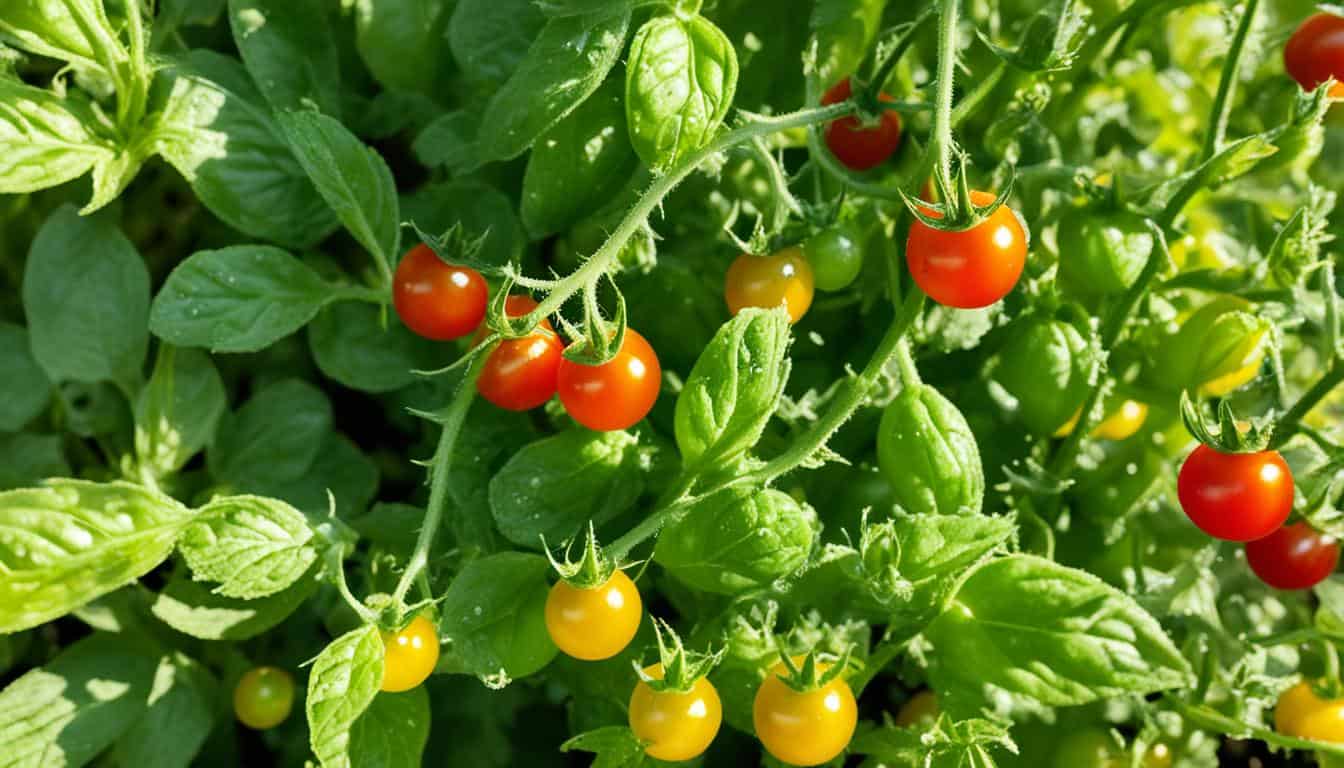
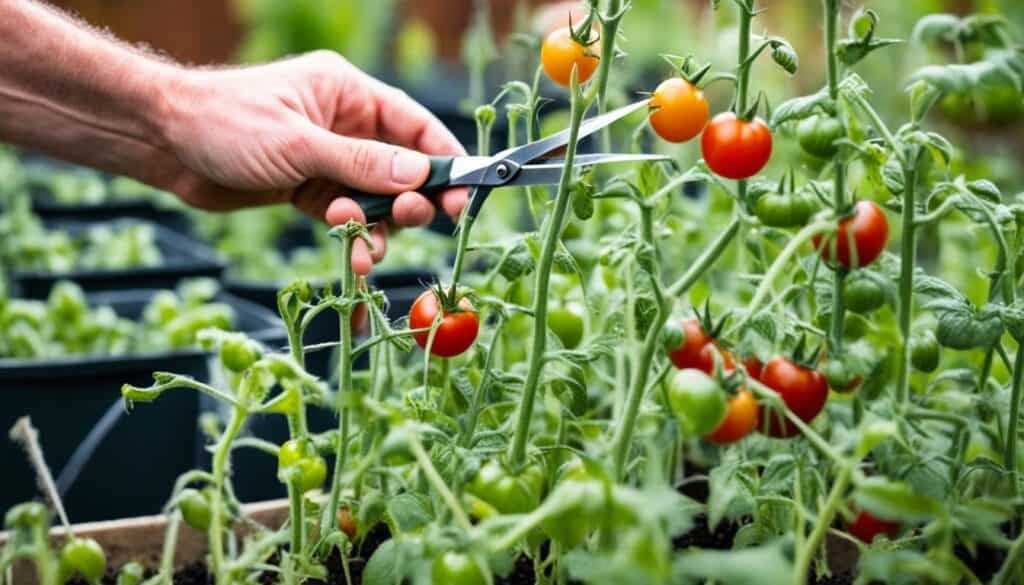
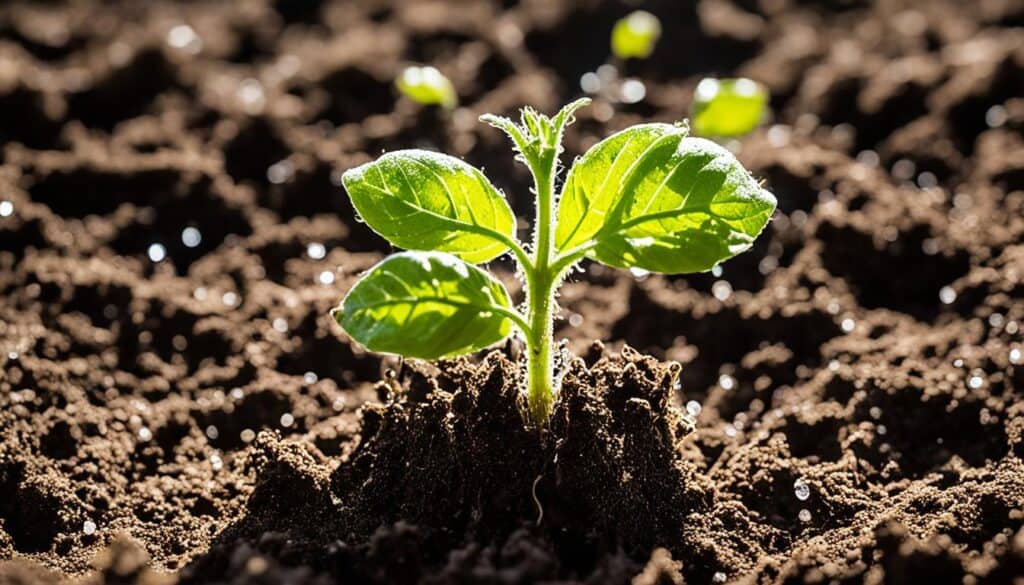
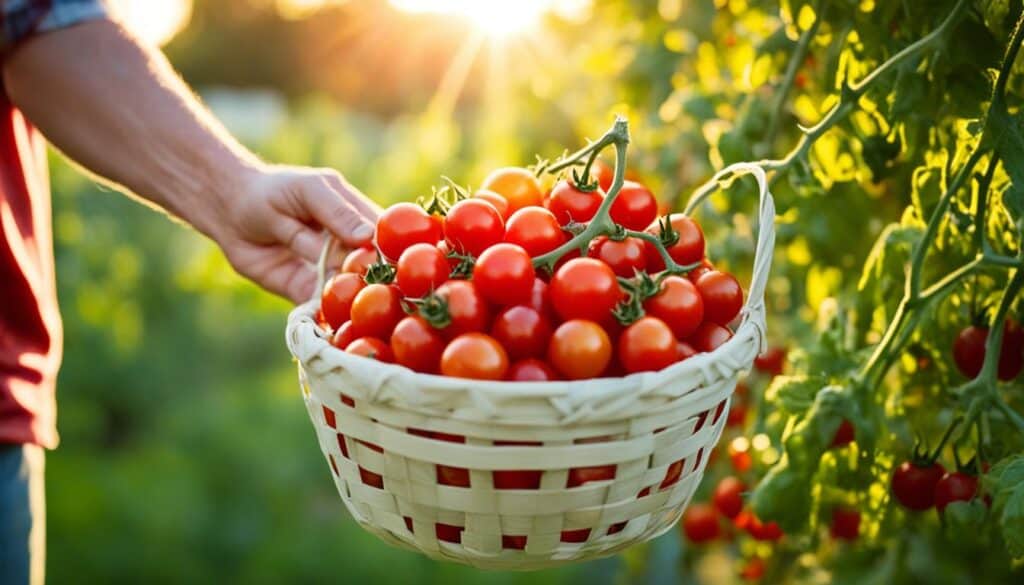
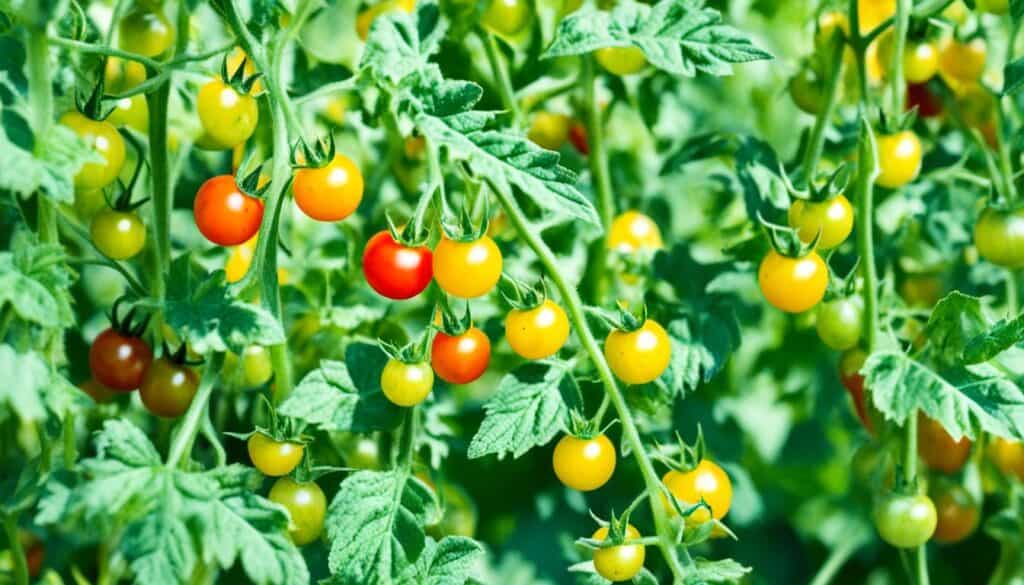
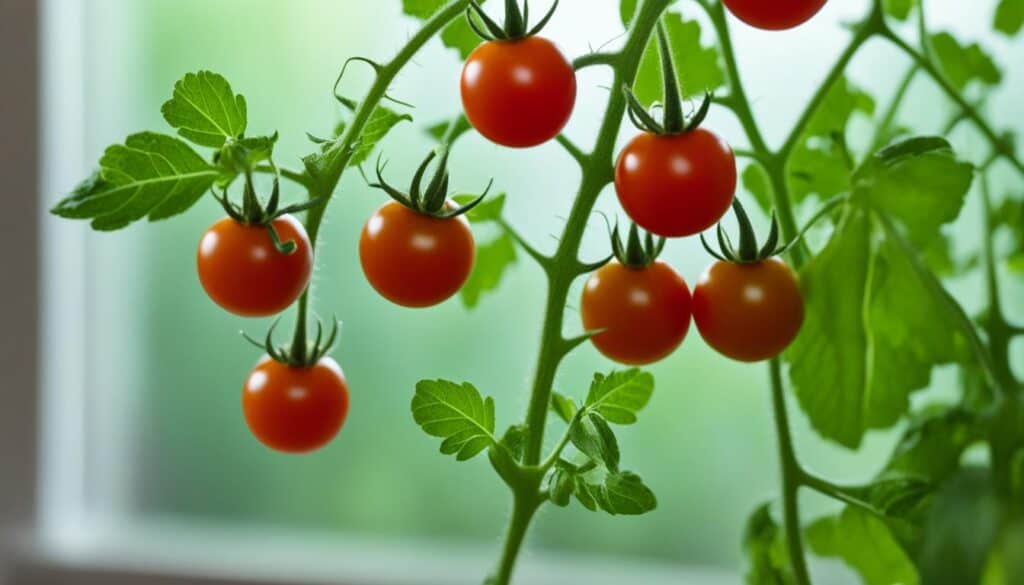



Leave a Reply